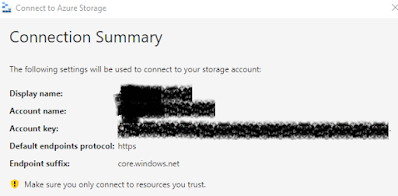Throughout my travels, I've come across some interesting things in Azure. This is not a comprehensive list; In fact, it's rather scrappy. I'd go "Oh, neat idea." and stick it into this blog post over months.
Azure Storage Explorer
A lot of information came from this video by HarvestingClouds.
This is using connect with Name and Key. There's an option to use http to connect, but I go with https. We can attach by right-clicking the relevant connection.
Remember when you learned to set permissions on local files?
Of course you do.
You can do the same through the Azure Portal, with a few more features, such as an access control list for IP addresses, and start/expiry dates.
Peering 2 virtual Networks under the same subscription (in the same group. Which may defeat the entire purpose of peering.)
Checking the visitor stats of a static webpage (I brought it down, but you can still see the URL).
Allowing Webapp Login;
Using SSH Keys with Windows on Azure
I have SSH'd into Routers, Switches, things long forgotten. So now let's have a go with a Virtual Machine on Azure, running Ubuntu.
Hitting yes causes the remote host to close the connection. I think the keys may not match.
Also,
notice that it doesn't have the SSH at the beginning of the command,
only keys. Here, everything works, and I have SSH'd into an Ubuntu VM.
Budget and Storage














Comments
Post a Comment